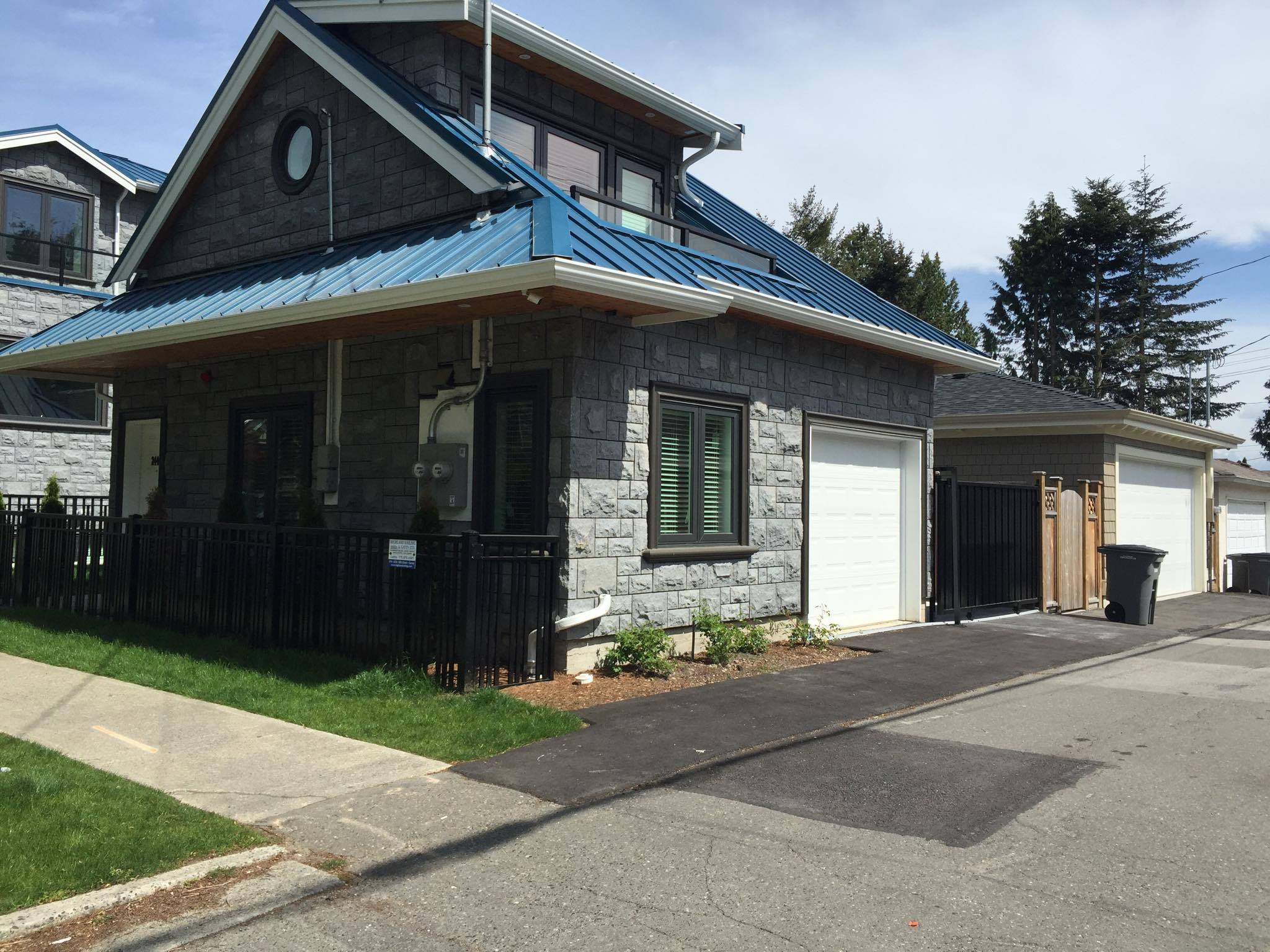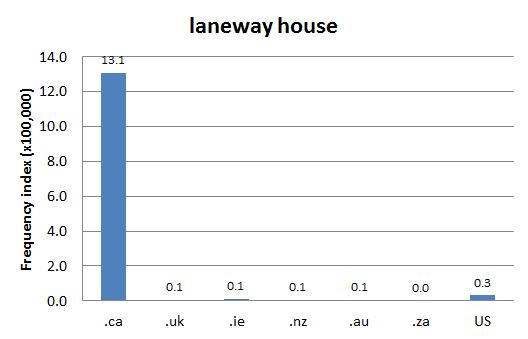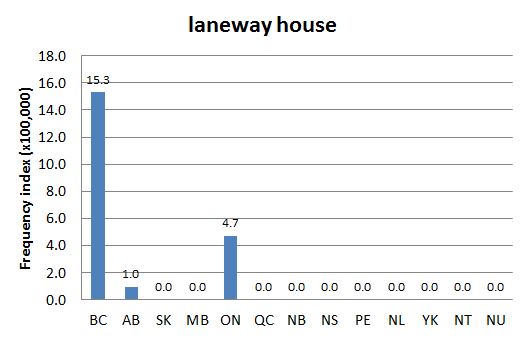DCHP-2
laneway house DCHP-2 (October 2016)
n. — predominantly Vancouver & Toronto, Housing
a small house, built behind an existing house, that is usually accessed through the back alley (see Image 1).
Type: 1. Origin — Laneway houses were built in Toronto as early as 1989 (see the 2008 quotation). After a pilot program, the Toronto government declined to continue approving laneway houses, based on a review of the impact on city services, including "snow removal, garbage collection, water and sewer infrastructure" (see Toronto Staff Report reference and the second 2006 quotation). In 2006 in Vancouver, city council conducted its own research project on laneway housing (see the first 2006 quotation) and approved them as part of the city's EcoDensity initiative and by 2012, 500 house permits had been issued (see the 2012 quotation). By 2016, the soaring real estate prices in the city had made laneway homes one of the last strategies for average income earners to individual home ownership in Vancouver.
The term laneway house stems from the structure's usual location; laneway homes often have front doors facing the back lane (see the 1997 quotation). Since the term laneway is a Canadian preservation, it follows that laneway house is virtually restricted to Canada (see Chart 1). British Columbia is currently the only province that has approved laneway housing, which explains its high frequency in Chart 2. By 2016, the soaring real estate prices in the city have made laneway homes one of the last strategies for average income earners to individual home ownership in Vancouver.See also: laneway eco-density
References:
- City of Toronto "Staff Report, 20 June 2006" Accessed 26 Sep. 2013
Images:

Image 1: A laneway house photographed from the alley (lane) with the back of the main house on the left. On Tolmie St. between W 8th and 9th Ave. in Vancouver. Photo: S. Gaylie.
Chart 1: Internet Domain Search, 17 Sep. 2013
Chart 2: Regional Domain Search, 17 Sep. 2013

